A lot of housewives are engaged in home gardening. Green, fresh leaves are pleasing to the eye. Blooming buds adorn gray everyday life, especially in autumn and winter days, when bright colors are so lacking. But it happens that aphids appear on indoor flowers and the question arises: how to fight and get rid of adversity, preferably with folk safe means.
Material Content:
What do aphids affected domestic plants look like?
With a slight lesion, the leaves begin to curl. During the inspection, small punctures and small, about 2-3 mm, insects can be seen on them. Most often, parasites are colored white or greenish. White aphids love to settle on flowers with delicate, soft leaves, such as violet, begonia, cyclamen.
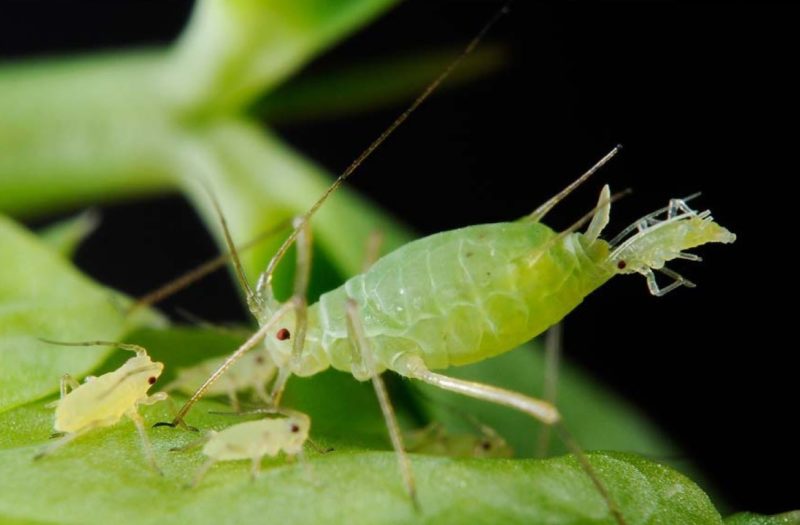
Sometimes the presence of aphids can be determined by small growths on the stems or leaves. They cannot be seen on tree trunks of plants, since the proboscis of the insect is designed in such a way that it is not able to bite through the bark.
The main harm of these parasites is to pierce the thin skin of the leaves and suck their juice. Often leads to the death of the whole flower when the colony attacks either a young shoot, or it is so large that it can paralyze the growth of an adult plant by sucking juice from it.
Causes and signs of aphids on indoor plants
By itself, a pest cannot appear on indoor flowers.
This means that the aphids were brought in from the outside.
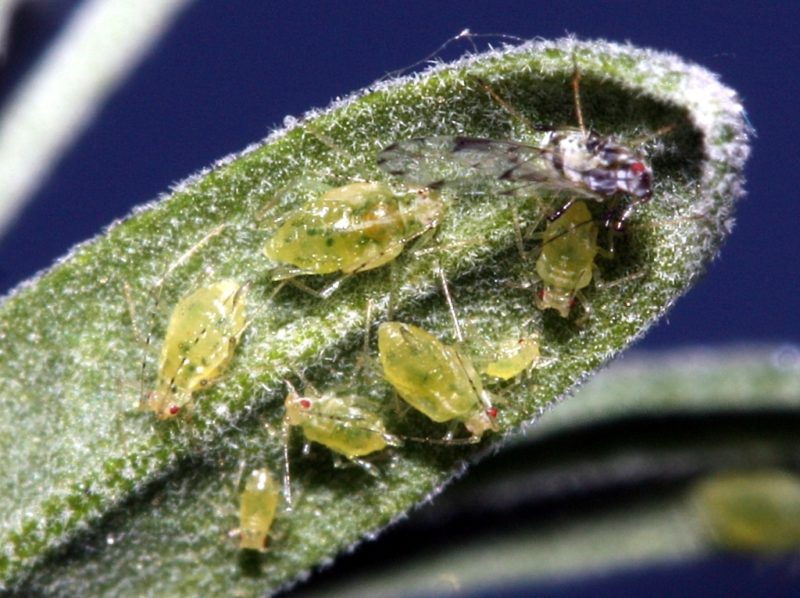
In order to protect your pets from such a misfortune, it is important to know how to infect flowers:
- One of the main causes of aphid damage is the purchase of an already diseased flower. From an infected plant, insects quickly spread to other flowers and infect healthy leaves and buds. From this we must conclude that when acquiring a pot with a new flower, it must be inspected and placed for a while, in quarantine;
- When replanting plants, with soil replacement. If the soil mixture was purchased in a specialized store, or prepared independently, the land must be disinfected before the procedure. Having scattered a thin layer on a baking sheet, it is calcined in the oven or heated in the microwave. In winter, the soil can be frozen out by setting it for several days in the cold;
- One of the common cases is the removal of plants into the open air, a balcony or a loggia and the windows open. Mistresses often air the flowers in this way, not thinking that they are infecting their pets;
- Aphids can bring larvae to the house and our other pets - pets. Larvae often adhere to wool and paws and successfully migrate to flowers. It is also likely that the pest can be brought on clothes from the garden or just outside;
- Perhaps the ants live in the apartment. They like to feast on the sweet secretions of aphids, therefore, first of all, it is necessary to get rid of domestic parasites and only then to remove floral ones.
It is interesting: aphids on currants - how to fight?
Recognizing the appearance of aphids on indoor plants is quite simple by looking at them when watering or other procedures:
- on the leaves and stems of flowers appears a syrupy trace from the secretions of pests;
- young shoots with which aphids love to feast, curl and fade;
- the appearance of black marks on the leaves - the spread of soot fungus, which is carried by insects;
- with significant settlement, from the wrong side of the leaf, whole colonies of parasites can be considered;
- buds that have time to open look ugly, the flowers are small, or do not open at all.
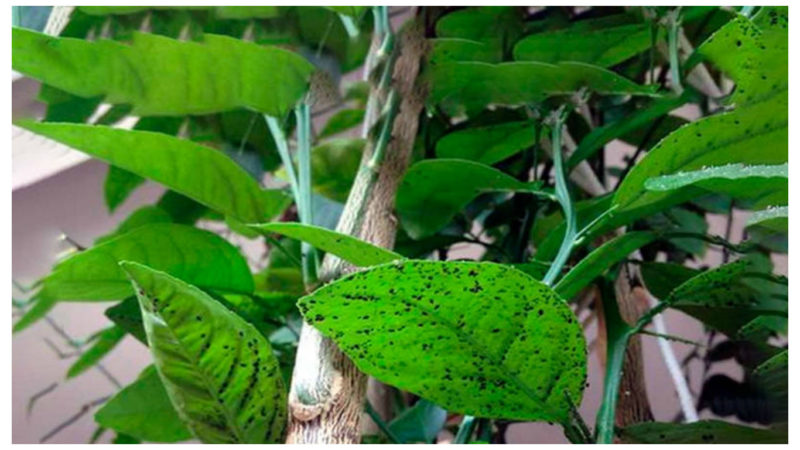
From all that has been said it is clear: to see and understand that a home flower is affected by aphids is quite simple, but the host of the plant chooses the method and method of controlling the pest.
Of course, the easiest way is to buy a chemical aphid control product in the store, but is it always justified and safe for people and animals living in the apartment. Perhaps it is better to do with folk remedies. These are simple and effective methods, and are completely safe for others.
Ways to control pests folk remedies
Do not forget about preventive measures and before you buy this or that plant in the store, from the hands of the market, or take it from friends - it must be examined for aphids.
If during the acquisition of the flower insects are not noticed, but they subsequently appeared, immediately it is necessary to think about their destruction. Simple folk methods are suitable for this.
Infusions from aphids on tops
A frequently used remedy, but it is good only in the spring-summer period. When culling poor-quality seedlings, pinching or removing excess leaves on tomato stems, they take 400-500 grams of raw material, grind and boil in 1 liter of water for about half an hour.
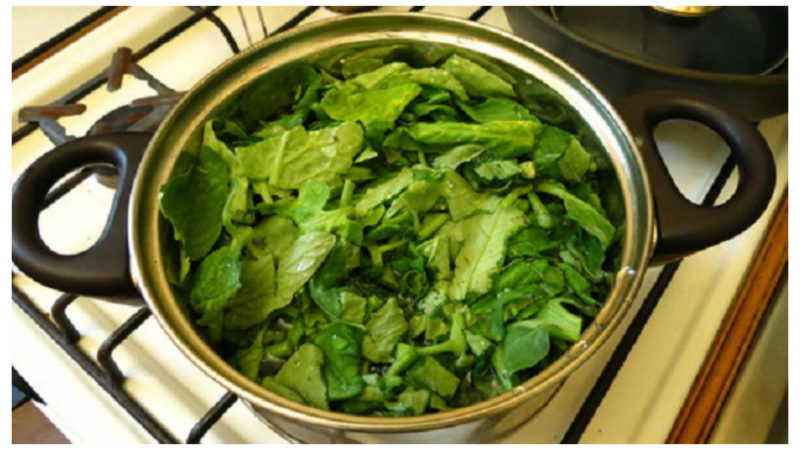
After filtering and cooling, grated soap is added to the solution. It is better to take a brown household grated. This soap has fewer chemical additives and it will provide the best adhesion of the composition.
Having added soap to the broth, it is stirred until a homogeneous mass and complete dissolution. Perhaps the composition turned out to be too concentrated, so it is better to dilute 1: 1. Only after this can several trial leaves be processed.
Just making sure that the plant has passed the procedure at the control site, infected plants are processed. They are either sprayed from the spray, or, if the solution is thick, wipe the diseased plant with a cotton swab.
Infusions on vegetables
Various infusions on vegetables will also help get rid of aphids on home flowers.A decoction of onions or onion husks, an infusion of garlic, and chilli peppers in an infusion help well.
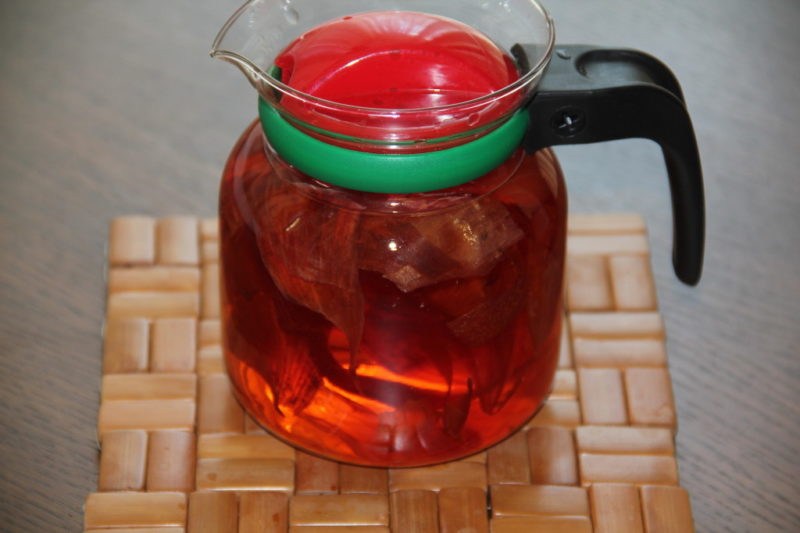
- Onion infusion is prepared simply: one medium onion needs to be chopped to a state of gruel and pour a glass of water for 2-3 hours. After filtering, the finished composition is wiped the leaves and stems of the plant 1 time per week.
- For infusion from onion peel take a handful of raw materials, pour warm water and insist 12-15 hours. A filtered solution is sprayed with flowers. Often enough 3-4 procedures to get rid of aphids.
- The infusion of garlic is prepared in the same way as onion: a not very large head of garlic is taken, chopped and infused. The infusion is ready in a day or two. For spraying with a spray gun, the infusion is filtered. To speed up the process, garlic gruel is poured with two glasses of boiling water, leaving it to infuse for 4-5 hours.
- Getting infusion from pods of hot pepper is also quite simple: 2-3 chopped pods are boiled for about an hour in a glass of water. Then they insist a day and, having filtered, dilute with one liter of water. The recommended frequency of use is once every two weeks. An undiluted infusion is stored indefinitely, so it is best to always keep it at hand and, at the first sign of parasites, apply.
Vinegar vs Aphids
Among flower growers, the use of vinegar in the fight against aphids is quite popular. Take a tablespoon of 9% vinegar per liter of water and wipe or spray the leaves of the infected plant.
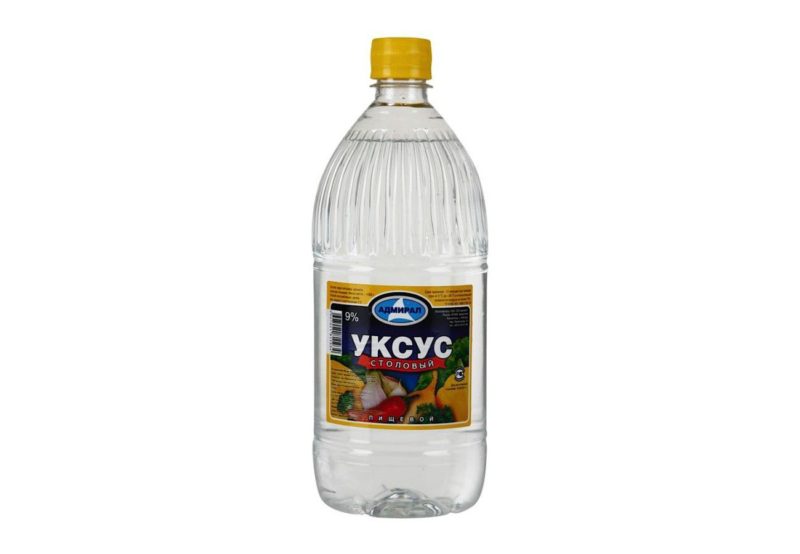
It can be used for prophylaxis for the treatment of healthy flowers where patients are present.
Infusions on celandine and marigolds
Such infusions are good because you can buy dried grass at any time in a pharmacy or cut it on a suburban area, prepare it yourself.
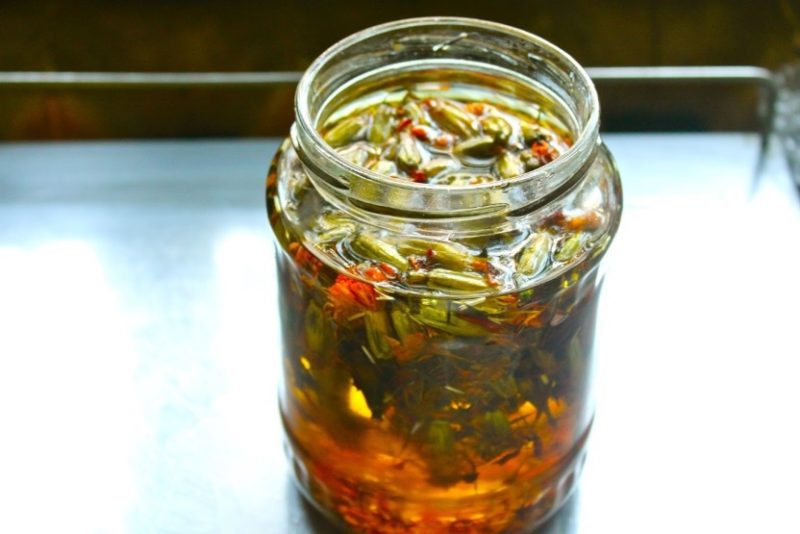
Dry plants take: 40 g (marigold) or 100 g (celandine), insist in a liter of water for about a day or two, filter and treat the affected plants. Leaves can either be sprayed or wiped.
Tobacco or Wood Ash
One popular remedy is tobacco infusion. Take 40 g (or a pack of shag), insist a day in a liter jar of water, drain from the sediment and wipe or spray the plant.
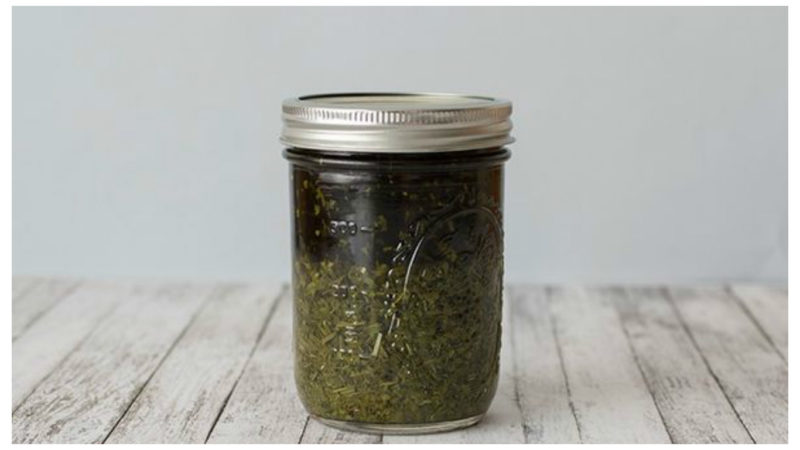
Wood ash is not only a successful means of pest control, but also an excellent fertilizer, so this infusion can process leaves and stems and water the earth in a pot.
A glass of ash is added to 5 liters of water and infused for 3 hours or more. Soap is added for spraying, but then you need to make sure that the solution does not fall on the ground. When wiping the leaves, soap can not be added, and the remnants of the infusion should be used as fertilizer.
Soda and hydrogen peroxide in the fight against aphids
Soda and soda solution are an indispensable lifesaver in the household. An effective tool in the fight against aphids on flowers. A teaspoon of the composition is enough for half a liter of water. You can both spray the flower and wipe the leaves and stems.
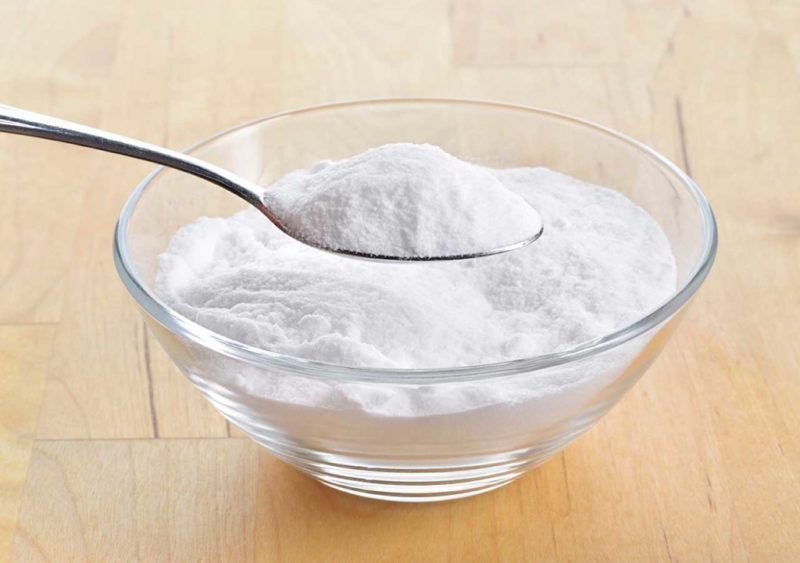
Experts recommend adding a little liquid soap and 3-4 tablespoons of vegetable oil. Interval of use - once every 2 weeks. Spraying, in order to avoid burns, should be carried out either in the evening, or in cloudy weather, or by shading the flower.
Hydrogen peroxide is used in the solution at the rate of: 1 tablespoon of 3% of the drug per half liter jar of water. Processing is done either by spraying or rubbing the leaves of the plant.
Aphid Prevention
As experts say, “A disease is easier to prevent than to cure,” so you need to know how to prevent the appearance of aphids on flowers:
- periodically inspect the plants and, at the first sign, treat with any means available. Newly acquired plants are quarantined for at least a week;
- timely top dressing, transplantation into specially selected soil mixtures will allow the plant to develop normally, and a well-growing flower is less likely to become infected;
- in the summer, for prevention, it is good to spread mint leaves between pots with indoor plants, aphids do not tolerate them.In winter, a window geranium should be put on the windowsill with other flowers;
- it is necessary to monitor the microclimate of the room. The higher the temperature and drier the air, the faster the pest multiplies.
Tracking the condition of flowers, conducting timely dressing and watering, you can get beautiful and healthy plants that bloom and delight with bright greenery all year round.












